by Hugh Fife
In the Victorian era an asylum was built at Lochgilphead in Argyll to house and treat the mentally insane of the South West Highlands and Islands and Dunbartonshire. Thousands of trees were planted around the grand stone buildings, in lines and clusters and belts – trees from Britain and Europe and Asia and North America, evergreen and coniferous. In hindsight one can question the reasons many of the hospital patients came to be in there, and the treatment they experienced, and one might question the purpose of the surrounding and enveloping strips of woodland, but somewhere in that mix of hospitalisation, treatment and enclosed sanctuary was a desire to help people and to deliver a professional service to the benefit of society. Once there were seven hundred people residing there; Gaelic speakers alongside people from the urban industrial west of Scotland. Now there are less than a hundred, but the ethos remains, and the Woodland remains.
As a nursing assistant at the Hospital in the mid-1970s I sometimes accompanied patients on walks around the spacious grounds. But about that time changes were underway that would lead to fewer and fewer patients and staff at the Hospital, which had been such an important local employer. Interestingly, the front line staff at the asylum/then hospital once came to the job with Gaelic as a credential (and there must have been interesting and amusing linguistic interactions between patients from Argyll’s Hebridean islands and those from urban Clydeside communities). Gradually the lawns and gardens and woods around the hospital became less managed – in part due to a growing ethos that patients working out in the grounds was not a correct thing. But there was an element of continuation – the horticultural project begun by the NHS, then carried on in partnership with the Scottish Association for Mental Health. But in terms of land management, and service user involvement, and enjoyment, the woods were the first to go.
When I was back working at Argyll and Bute Hospital from the late 1990s the old woods had become dark, dilapidated, muddy, and unwelcoming. People from the Garden Project, and the Hospital, and Argyll Green Woodworkers Association, and Reforesting Scotland, started to talk about the poor access into the woods, and the potential for renewal of the woods and the potential benefits in terms of mental health and wellbeing. Early support from the NHS, Scottish Natural Heritage, Forestry Commission Scotland, Argyll and Bute Council, and then Charitable funders, was crucial to getting the project going. With funding and support from the above, and from the Scottish Executive Mental Health Department, plus the toil of large numbers of participants, the whole woodland site was opened as a public park in 2007.
With a strong partnership of Reforesting Scotland, NHS Highland, the Scottish Association for Mental Health, Lochgilphead Community Council, and Argyll Green Woodworkers Association, Blarbuie Woodland developed into a Social Enterprise, delivering on a range of social, health, employment and environmental objectives. Daily activity includes maintaining and developing all-abilities access, felling and planting trees, milling and construction, growing trees and shrubs, and creating artworks. People experiencing mental ill-health are the key beneficiaries and the key participants; they are there everyday, working and walking in the woods, alongside disabled people, and a motley collection of local woodcraft workers. And Hospital patients and staff – including those of the adjacent and much newer Mid Argyll Community Hospital – and school groups and the wider public, regularly walk the woods. The Woods are accessible, and productive, but in what ways are the Woods impacting upon mental health and wellbeing?
It isn’t always easy to quantify and qualify what you’re doing when you are a fairly small local initiative – and to be blunt we felt a bit side-lined, being unable to carry out and produce research to prove our case, research that was required yet unattainable unless you have the right academic credentials. But changes were coming, and the Scottish Community Development Centre was able to get Government funding to enable community groups to carry out serious research, following recognised approvals and procedures – whilst yet remaining grass-roots. Following successful application to the SCDC, and approval from the NHS, and from the lofty but helpful towers of NOSREC (the North of Scotland Research Ethics Committee, in case you didn’t know), we devised our research plan, and got underway. People experiencing mental health problems became researchers in the team that was set up to research the ‘Impact of working and walking in Blarbuie Woodland has on health and wellbeing’. Anyone and everyone (apart from children) who walked and worked in the Woods was interviewed with digital recording devices, and a set of questions focusing upon health and wellbeing but also asking the interviewees what ways they would like to see the Woodland develop. The researchers found that walkers and participants experience very real health benefits from being out and about in the woods.
‘Participants enjoy being active in the open air, in a setting that is safe, and accessible in every sense’. ‘Being physically active improves their general sense of health. Interaction with other participants and workers, volunteers, contractors and woodland staff and members, enhances their sense of worth, confidence and happiness’. ‘Being involved in decision-making and learning new skills increases their confidence and motivation’. ‘Being in the woodland setting and involved in its development enhances their mental health and wellbeing’.
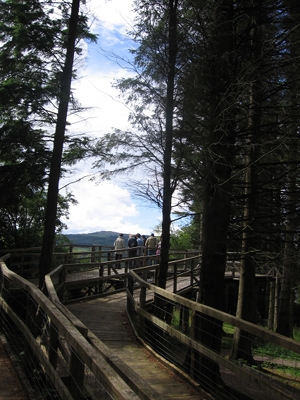
“Very definitely. It’s a place to….obviously to walk and enjoy the wildlife etcetra…..but it’s very much a place where you feel a sense of peace and you can meditate a little as you walk, and I would say that any form of quiet reflection is good for everybody’s health.”
The Health Professionals are aware that open air recreation and activity – and contact with nature – improves the mental health of their patients. They point to the values of fresh air and outdoor work in terms of health and confidence. They talk about the state of ‘mindfulness’ being especially possible in the woodland environment……..being in the present, untroubled by past trauma, or anxiety over the future. They express the view that ongoing treatment of hospital patients is not only enhanced by the proximity of the Woodland, but that the environment of the Woodland could be ideal for closer and better interaction between professionals and patients.

‘Coming here, just even today, and walking through the woods earlier this morning, it helps earth me, it calms me, it makes me feel at one with things without losing who I am within that…”
If you would like to find out more about Blarbuie Wood, please get in touch with Hugh or Anna at Reforesting Scotland.
(adapted from an article written for the journal of the Royal Scottish Forestry Society in 2009, following Blarbuie Woodland being named ‘Scotland’s Finest Wood’ in 2009)




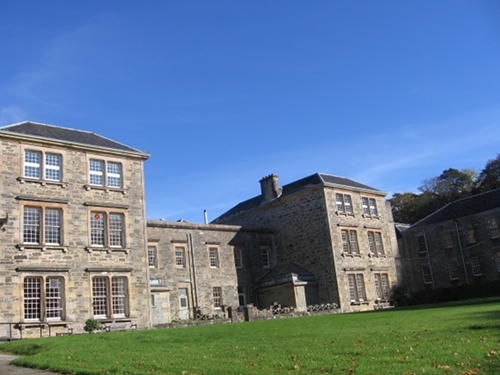
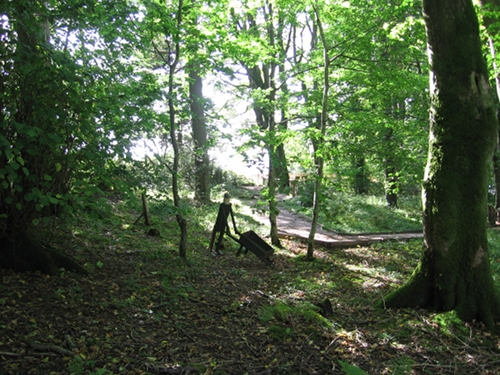

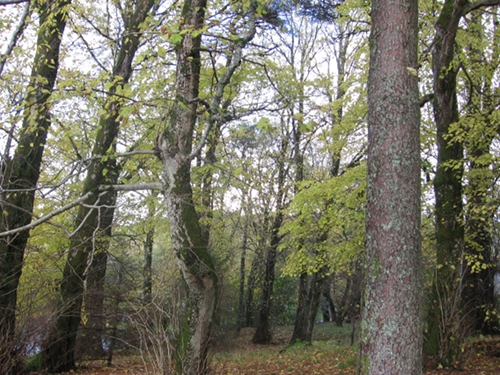
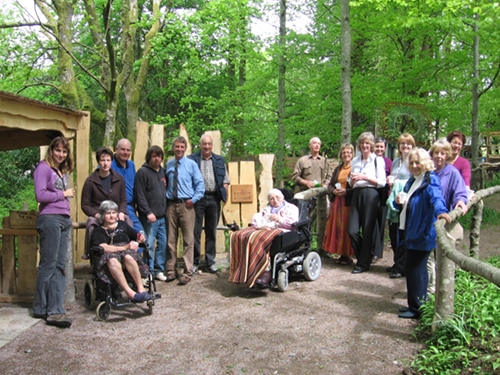























As from today Blarbuie Woodland Enterprise is a Charity and Company in its own right, with ongoing affiliations to Reforesting Scotland.